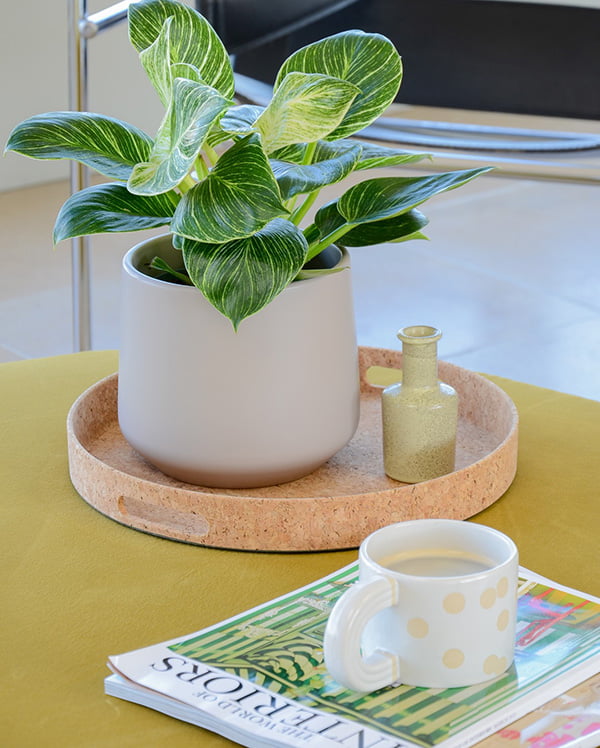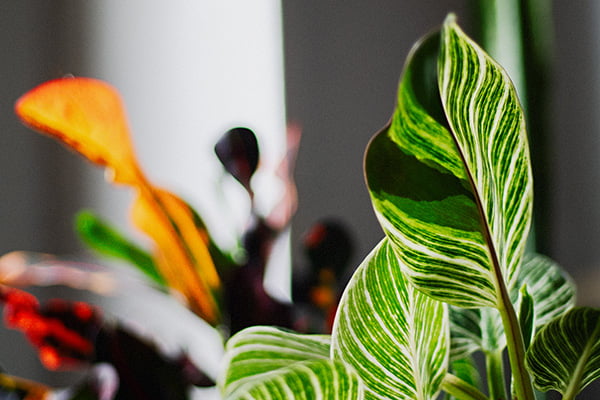Philodendron Birkin is one of the most popular types of philodendron plant today! Philodendron Birkin growth is slow and requires little maintenance, and it's also a must-have for houseplant owners who love variegated plants. It usually has a steeper price tag than most other houseplants, so you must know how to care for Philodendron Birkin plants before getting one!
Below, we'll tell you all the best Philodendron Birkin care tips to help your plant thrive! Philodendron Birkins are not a difficult plant at all!
Botanical Name
Common Name
Plant Type
Mature Size
Sun Requirement
Soil Type
Hardiness Zone
Pet Friendly
Philodendron Birkin
White Wave
Perennial
3' Wide And Tall
Bright And Indirect Sunlight
Well Drained
10-12
No
What Is The Philodendron Birkin Plant?
Most philodendron varieties originated from the tropical rainforests of Central and South America, where they grew to climb up the trunks of trees. However, Philodendron Birkin is unique because it doesn't have a natural habitat. It came about as a spontaneous mutation of Philodendron Rojo Congo, and it's a self-heading variety. This means that it won't climb, as other philodendrons do! It can stand upright on its own. However, it is not a fast-growing plant at all! It grows very slowly, and a mature plant will eventually top out at 3 feet tall.
The Philodendron Birkin leaves have dark green leaves with white pinstripe variegation. Each new Philodendron Birkin leaf is almost completely white, with thick variegation. However, as the leaves age, they become more green until they almost lose their variegation altogether.
Philodendron Birkin Care Requirements
Light
As a tropical plant, philodendrons need plenty of bright light - but it needs to be indirect light as well. Remember that philodendrons grow underneath rainforest canopies! They receive lots of light, but it's dappled. The best location for bright, indirect light is a south-facing window. However, an east-facing window is another good option because although your plant will receive direct sunlight in the morning, it's not a harsh light.
If you don't provide your Philodendron Birkin with at least 6 to 8 hours of bright, indirect sunlight daily, you'll notice the leaves will lose their white stripes well before reaching maturity. This is because the white part of the variegated leaves does not contain chlorophyll and cannot contribute to feeding the plant. If the light becomes scarce, your plant will prioritize getting as much green on the leaves as possible in order to stay alive.

Source: Flickr
Water
A key part of Philodendron Birkin care is plenty of water. They'll typically need to be watered weekly, or even more so if you live in a dry climate.
Always check the top few inches of the soil before watering, however. When the top inches of the soil feel dry, it is time to water your Philodendron Birkin. If you feel moist soil, wait another day or two!
Watering it too frequently will lead to root rot, so always check the soil first! If you notice brown leaves, this shows excess water sitting in the soil.
Temperature
The Philodendron Birkin grows best in temperatures between 65 and 75 degrees Fahrenheit - which is handy because most households are kept in this temperature range! Keep mindful of areas in your home where it might be colder or hotter. For a healthy Philodendron Birkin, keep it away from radiators, heating and cooling vents, drafty windows, and fireplaces.
Humidity
Like most tropical plants, Philodendron Birkin likes a humid environment. It's best to grow the Philodendron Birkin plant in a humid and bright area away from direct sunlight.
The ideal air moisture range is between 60% and 80%. If your house is not typically kept that humid, there are ways to boost the air moisture in the space directly around your plant.
Grouping
Plants naturally increase the humidity in the air directly around them.
Pebble Tray
Fill a tray with pebbles, then fill it with water to just under the top of the pebbles. Place your pot on the pebbles. Water will evaporate from the tray into the air around your plant.
Use A Humidifier
Particularly in dry climates, add a humidifier. You might benefit from a moisture boost as well!
Place Your Plant in The Bathroom
The steam from showers and baths will help your Philodendron Birkin thrive.
If you notice brown tips on otherwise deep green leaves, this is a sign that your plant needs more humidity.
Soil
Philodendron Birkin grows best in fertile, well-drained, and aerated soil mixture. You can purchase bags of potting mix in garden centers specially formulated for aroid plants, but you can easily mix up your own!
Start with potting soil with lots of nutrients and a neutral pH. Then, add perlite or orchid bark for drainage and filtration and sphagnum peat moss for moisture retention. Sphagnum moss is a great way to add air pockets and help prevent soil from becoming compact.

Source: Flickr
Fertilization
Philodendron Birkin plants are slow growers, taking as long as a decade to reach their full height and width. Therefore, they don't require much by way of fertilization.
Use a balanced, water-soluble fertilizer monthly during the spring and summer growing seasons. During the autumn and water, you will only need to fertilize every other month. Be sure that your fertilizer contains calcium and magnesium.
Pruning
Because Philodendron Birkin is a self-heading variety, it doesn't need frequent pruning. Simply trim away any dead or damaged leaves with clean pruning shears.
Propagation
There are many ways to propagate a Philodendron Birkin; the most popular ways are by stem cuttings and division.
Stem Cutting
Use clean pruning shears to cut a 2 to 4-inch length of the stem. Be sure that the cutting has at least one pair of healthy leaves and contains one or more leaf nodes. Remove the lower leaves, and place the cutting in a glass of water so that the bottom leaf node is fully submerged. Roots should appear within a month. When the roots are 1 to 2 inches long, you can transplant your cutting into the soil.
Division
You can divide the entire plant in half if you have a big, healthy plant. Gently remove your Philodendron Birkin from its pot. Divide the plant, using the root system to guide you to the best places to separate the stems. Place both plants in a pot with drainage holes and plenty of well-draining soil.
Potting And Repotting
Philodendron Birkin grows very slowly, so it can stay in the same pot for a year or two. This is a plant that you don't have to repot often.
Your Birkin plant could outgrow its pot in a single season if desired growth conditions are met. If your Birkin plant grows quickly, repot it in a new pot that is about 1-2 inches bigger than the current pot.
Philodendron Birkin Diseases and Common Problems
Spider Mites
When it comes to pests, spider mites are some of the worst pests you'll encounter with your Philodendron Birkin. They like to suck the juices from the leaves and stems of your plant. If you notice spider mites on your plant, remove them from any other houseplants, prune the leaves with the heaviest concentration of mites, and then wash the other leaves with insecticidal soap or neem oil.
Yellow Leaves
Yellow leaves can be a sign of old aging or overwatering. If the leaves are turning yellow or pale at the bottom, it may be due to aging, and it is falling off naturally. If the discoloration occurs higher up, it is a sign of overwatering.
Is Philodendron Birkin Toxic To Pets?
Can the Philodendron Birkin plant hurt your pet? Philodendron Birkin plants are toxic to both humans and pets due to calcium oxalate crystals. If the leaves or stems are ingested, symptoms such as burning and swelling lips and tongue, vomiting, and diarrhea can occur.

